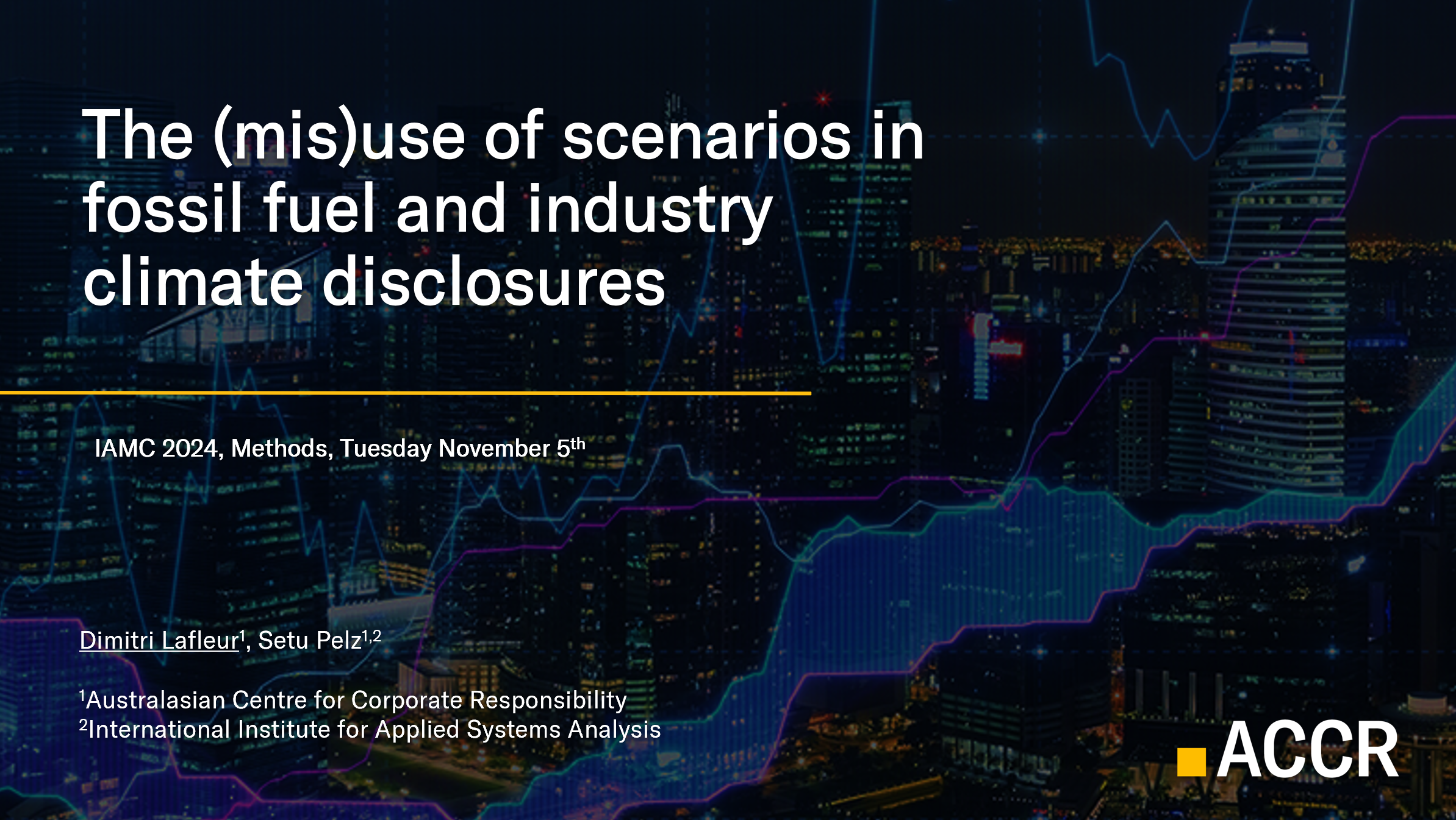Publication The (mis)use of scenarios in fossil fuel and industry climate disclosures
Summary
Since the Taskforce on Climate-Related Financial Disclosures (TCFD) recommendations were first published in 2017, major carbon emitting companies have used climate scenario analysis to claim Paris alignment. Despite this, global emissions from oil and gas have continued to increase and companies have continued to sanction new fossil fuel projects – raising questions about the credibility of those claims.
Using a simplified assessment framework, we examined how a sample of carbon majors have used Integrated Assessment Modelling (IAM) scenarios to assess Paris alignment. We identified seven types of common misuse, occurring in a range from 93% of the sample size, down to 27%.
Investor-owned companies represent almost a quarter of all emissions coming from the ‘carbon majors’ – a group defined as the 122 largest oil, gas, coal and cement producers in the world. Our sample represents more than half the emissions from the investor-owned carbon majors.
The findings raise substantial concerns for investors about the reliability of the information provided in company disclosures and climate plans. We recommend that the Integrated Assessment Modelling Consortium (IAMC) – an organisation of scientific research institutions – could work with investors to help prevent and correct the misuse of transition scenario analysis.
The (mis)use of scenarios in fossil fuel and industry climate disclosures was originally presented at the 17th IAMC conference in Seoul, held from November 4-6, 2024.
Key Points
- 93% of companies using IAM scenarios do not disclose their specific Carbon Capture and Storage (CCS) or Carbon Dioxide Removal (CDR) requirements post-2050, which affects investors’ ability to assess the degree to which CDR and CCS are relied upon in scenarios which feature unrealistically high levels of fossil fuel emissions pre and post 2050.
- 67% used non-updated scenarios that are two-plus years old and not reflective of the steeper emissions reductions required because of broader climate inaction. This means some company reduction targets do not align with their specified temperature outcome.
- 47% collapse scenario paths into “ranges” that suggest there are upper-scenario ranges which comply with a labelled temperature target. This leads to occasions where fossil fuel assets are misleadingly described as viable within a 1.5 to 2°C pathway, misrepresenting the scale of transition risk and commodity interdependence to investors.
- 40% collapse variables from a multitude of incompatible scenarios into an average or variable commodity use range. This leads to instances where an upper-bound commodity fossil fuel use range is implied to be feasible and align with a given temperature goal, misrepresenting transition risk and reserve risk for investors.
- 40% omit the likelihood, peak and/or long-term temperatures of the scenarios they are referencing. All three need to be provided for investors to assess the likelihood and feasibility of overshoot in a scenario (e.g. a 1.5°C rise by 2100 is less feasible with high overshoot).
- 33% align their targets to a scenario without disclosing the target’s pathway. While this implies a company’s targets align with a given scenario’s temperature goals and are feasible, scenario temperature goals depend on cumulative emissions over time, not just the level specified for a target year.
- 27% compare sector-specific against economy-wide emission pathways. Emission reduction rates can vary considerably across sectors in an economy-wide scenario, making comparison against an individual, sector-specific pathway inappropriate.
Download a PDF of The (mis)use of scenarios in fossil fuel and industry climate disclosures.
Please read the terms and conditions attached to the use of this site.
